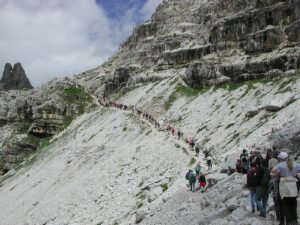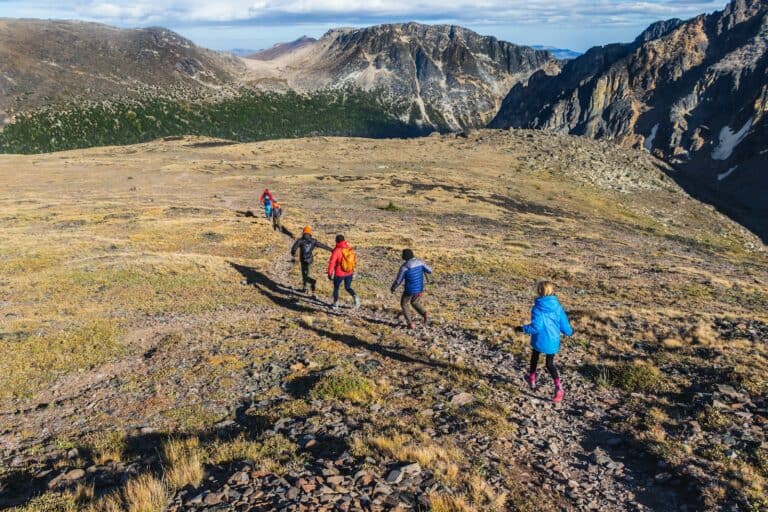Trail running is more than just a sport; it’s an adventure through time, history, and culture. As trail runners lace up their shoes and hit the rugged terrain, they unknowingly follow in the footsteps of ancient and indigenous runners who paved the way for this exhilarating activity.
In this blog post, we’ll explore the rich history of trail running, the lessons and wisdom we can glean from those who ran before us, and the incredible trail running traditions in indigenous cultures.
Trail Running History: Tracing Our Steps Back in Time

Trail running has come a long way from its humble beginnings. It’s not just a modern-day fad; it’s deeply rooted in history. Let’s take a journey through time and explore the history of trail running.
The Early Days of Trail Running
Trail running’s origins can be traced back to various cultures and civilizations across the world. Whether it was for hunting, communication, or pure survival, ancient runners were some of the world’s first trail runners. These early trail runners relied on their endurance and agility to navigate rough terrains.
Trail Running in the 20th Century
The 20th century witnessed a resurgence of interest in trail running, particularly in mountainous regions. This period marked the birth of organized trail races, some of which have become iconic, like the Dipsea Race and the Pikes Peak Marathon. As trail running evolved, so did the gear, giving birth to specialized trail shoes.
The Modern Trail Running Movement
The late 20th century and early 21st century saw the rise of ultramarathons, the international trail running association, and an explosion in the number of trail runners. With the help of technology and innovations in trail shoes, runners began to conquer even more challenging terrains and races.
Lessons and Wisdom from Ancient Runners: What Can We Learn?

Ancient runners were not just athletes; they were wise practitioners of their craft. Their experiences and knowledge offer valuable insights to modern trail runners.
The Mindset of Ancient Runners
Ancient runners possessed an unyielding determination and a deep connection to the land. Their mental fortitude allowed them to endure the harshest conditions, offering a lesson in resilience for today’s trail runners.
Physical Prowess of Ancient Runners
These runners achieved remarkable feats with minimalist footwear. Their endurance, balance, and agility were honed over years of running on uneven terrain. Understanding their physical attributes can inform our own training and performance.
Ancient Running Traditions
The ancient practices, rituals, and stories surrounding running in various cultures are a treasure trove of inspiration. These traditions are still alive in the practices of indigenous cultures.
Trail Running in Indigenous Cultures: A Glimpse into Timeless Traditions
Indigenous cultures around the world have their own unique relationships with running. Let’s explore some of these captivating traditions and their continued influence on modern trail running.
The Tarahumara Runners
Hailing from the Copper Canyons of Mexico, the Tarahumara runners have a rich history of running long distances in minimal footwear. Their spiritual connection to the land and endurance serve as an example for today’s trail runners.
The Marathon Monks of Mount Hiei
Japanese Tendai Buddhist monks run a thousand marathons in a thousand days to achieve enlightenment. Their story is a testament to the power of discipline, endurance, and faith.
The Bushmen of the Kalahari Desert
The San people, also known as Bushmen, have used running for hunting and communication for thousands of years. Their expertise in reading the land and their unmatched tracking abilities are awe-inspiring.
The Influence on Modern Trail Running: Bridging Past and Present

The wisdom and traditions of ancient and indigenous runners have not been lost. They have found their place in modern trail running, shaping the sport in profound ways.
Natural Elements in Modern Trail Running
Minimalist and barefoot running techniques have been embraced by modern trail runners seeking a more natural connection to the terrain.
Mindfulness and Connection to Nature
The spiritual and communal aspects of ancient running traditions have influenced the way modern runners approach their sport. Trail running is not just a physical activity; it’s a holistic experience.
Challenges and Controversies: Navigating the Trail of Debate
While the lessons from ancient and indigenous runners offer invaluable insights, they also come with their fair share of challenges and controversies.
Balancing Tradition and Technology
As modern trail runners look to the past for inspiration, they must strike a balance between embracing tradition and leveraging technology.
Misconceptions About Ancient Practices
Some misconceptions about ancient running traditions can lead to misinformation and confusion. It’s essential to separate fact from fiction.
The Influence of Organized Trail Running Races

The growth of organized trail running races has been a pivotal force in shaping the sport’s landscape. Trail races of various lengths, from the popular 10Ks to epic ultramarathons, provide opportunities for runners to challenge themselves and explore breathtaking landscapes. One noteworthy organization at the forefront of this movement is the American Trail Running Association, which plays a vital role in promoting and coordinating these events.
Their dedication to fostering the trail running community has been instrumental in bringing runners of all levels together. Trail races not only offer competitive opportunities but also create a sense of camaraderie among participants, as they embark on exhilarating journeys through diverse terrains, often requiring specialized trail running shoes for optimal performance.
Mountain Running: Conquering Peaks and Valleys
Mountain running represents a subset of trail running that demands a unique set of skills and an indomitable spirit. The sport requires runners to navigate steep ascents and descents, often at high altitudes, and sometimes over rugged, uneven terrain. In mountain running, the route itself becomes a challenge, with competitors often forging their own path.
The combination of thin air and unpredictable conditions poses a test of endurance and adaptability that few other sports can match. As runners ascend towards mountain summits, they rely on aid stations for sustenance and support. This specialized form of trail running pushes the boundaries of human capability, attracting both elite athletes and those who seek to conquer the world’s most magnificent peaks.
Ultra Trail Adventures and Beyond
For those who find the allure of standard trail races not challenging enough, ultra trail races beckon with their grueling distances and epic routes. The term “ultra trail” typically refers to races that extend beyond the traditional marathon length, often encompassing distances ranging from 50 kilometers to hundreds of miles.
These races take runners through remote wilderness areas, offering a profound connection to the natural world and pushing the limits of human endurance. Aid stations in ultra trail races become a lifeline, offering nutrition, hydration, and support for participants undertaking these arduous journeys. The sport’s allure lies not just in the destination but in the journey itself, as runners embrace self-discovery and a profound connection to nature.
The Intersection of Trail Running and Mountain Biking
While trail running predominantly involves the art of putting one foot in front of the other, it shares some common ground with mountain biking. These two disciplines often intertwine, with trail runners and mountain bikers sharing the same trails. The coexistence of these athletes requires mutual respect and awareness to ensure safety and harmony on the trail.
Trail runners learn to anticipate encounters with mountain bikers, while bikers adapt to the presence of runners. This intersection between the two sports creates a dynamic environment in which participants experience the terrain in their own unique ways, whether they’re on foot or wheels. Whether you’re a dedicated trail runner, a passionate mountain biker, or both, the trails offer endless opportunities for adventure and self-discovery.
Final Thoughts: History of Trail Running
Trail running transcends the realm of mere sport, becoming a transformative journey that weaves through the tapestry of time, history, and culture. The intricate history of trail running and the profound wisdom handed down by ancient and indigenous runners offer an abundant wellspring of motivation for today’s trail enthusiasts. As we delve into the annals of our origin, we gain a deeper appreciation for the trails we tread, the landscapes we navigate, and the legacy we carry forward.
History is not a remote concept; it is the very route we blaze each day. It serves as a living testament to the indomitable spirit that has driven runners across the centuries, inspiring countless individuals to organize races, embark on their own routes, and take part in the thriving community of many trail races. Through this collective journey, we find not only our athletic selves but also a profound connection to the roots of our sport, uniting us with runners of the past, present, and future.
